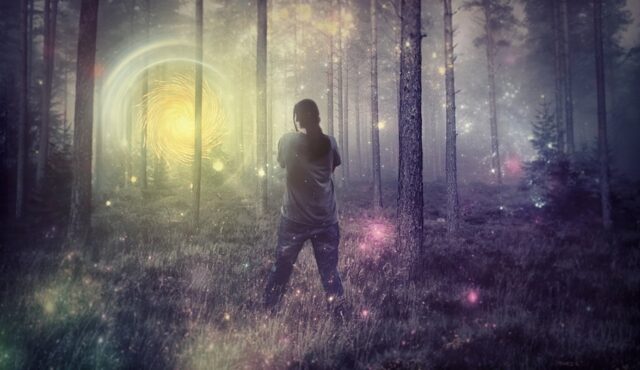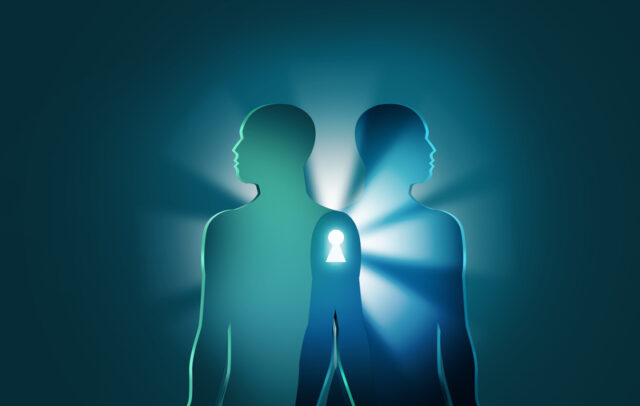
What happens to the mind during and after death? Where do we go when we die? In our never-ending quest to answer these age-old questions and understand what happens to us after we leave this world, we have always found ourselves drawn to the enigmatic phenomenon of near-death experience (NDE). Many experts believe that if we use scientific tools and techniques to study NDEs, we can learn more about the mysteries of human consciousness, understand the mind-body connection better, and get some hints as to what happens to us after we die.
Those who’ve come close to death often report experiencing life-changing events on “the other side,” like reuniting with passed relatives or beloved pets or seeing a light at the end of a long, dark tunnel. Despite the seemingly paranormal nature of these encounters, experts have proposed a few theories that can explain what they are and why they happen from a scientific viewpoint. Although there’s still a lot to be uncovered, we’ve put together a brief guide that will hopefully explain everything you wanted to know about NDEs, so let’s dive right in.
1. What Are Near-Death Experiences?
A near-death experience is essentially a profound psychological occurrence that involves mystical elements. It is typically more common for people close to death to experience an NDE, but they can also occur due to intense emotional or physical pain, and in many cases, they can also be triggered by heart attacks, traumatic brain injuries, or sudden and extreme drop in blood pressure. Many have even reported experiencing NDE during meditation, which can be explained by the fact that meditation helps lower blood pressure. Although they’re very enigmatic, near-death experiences are surprisingly quite common; approximately 30% of those who’ve had a brush with death report having experienced one.
The common characteristics most people report are feelings of contentment, psychic detachment from the body, and rapid movement through a long tunnel with a bright light at the other end. Religious beliefs and cultural influences may also affect the kind of near-death experience people have. For instance, you’ll find that many Buddhists who had a brush with death report meeting Yama, the Hindu king of the dead, while Christians often claim to have met Jesus. Children, on the other hand, typically describe seeing friends, pets, and teachers when entering “the light”.
2. How Do They Affect People?

The great majority of people who experience NDEs have expressed positive feelings, claiming that their NDE has helped reduce their fear of death, enhance their affirmation of life, strengthen their will to live, and improve their well-being. Unlike most life-changing events or transformative experiences of an earthly origin, the changes people feel after a near-death experience seem to become more progressive and notable as they age.
It is worth noting, though, that near-death experiences are not always positive. Many people reported feeling out of control, helpless, and painfully aware of their nonexistence, while others reported seeing hellish visions or receiving judgment from a higher power. In any case, the changes people experience after an NDE can last for decades or even a lifetime, which goes to show that near-death experiences are real, not a hallucination.
3. What Can They Teach Us?

Near-death experiences highlight the fact that life is fleeting and can go by in the blink of an eye, literally! Naturally, this newfound awareness opens the door to many life-changing lessons, but perhaps the most prominent lesson people realize after an NDE is that they take life for granted. Between finishing work on time, picking up the kids from school, making dinner, and paying the bills, we all get too caught up in our fast-paced lives that we forget to actually live!
Even though we are always working to secure our financial future, we usually forget to plan for the inevitable. This is another important lesson that those who have come close to death realize. While putting your affairs in order in anticipation of death can seem quite morbid, it is the sensible thing to do. It is best to deal with such matters sooner rather than later when your mental and physical competency is not yet compromised by old age.
Planning your estate includes preparing a complete statement of assets and liabilities, writing a will, nominating legal guardians if you have children, and making your preferred funeral arrangements clear. You should also invest in life insurance. If you do some online research or visit simplifiedsenior.com, you can learn about the different final expense programs and life insurance policies that can help you put your affairs in order and secure your family’s future. A word to the wise, stay away from those one-size-fits-all policies when making your final arrangements. Instead, look for a customized policy that can give you peace of mind in knowing that your beneficiaries and loved ones will be financially settled after your passing.
4. Why Do They Happen?

Different theories explain near-death experiences, yet there’s no definitive explanation as to why they happen. Scientific explanations for NDEs include depersonalization, a psychological disorder with symptoms, such as feeling unreal and detached from the body. Some researches also explain that if brain cells begin to die or if there’s a lack of oxygen in the brain, this can trigger symptoms similar to those of a near-death experience.
On the other hand, religious people see NDEs as proof that there’s life after death. Although we don’t have a single, solid explanation for near-death experiences yet, there’s no denying that they are a fascinating subject that deserves further investigation.
Near-death experiences are both terrifying and enthralling. It’s hard to understand this unearthly phenomenon unless you’ve personally experienced it yourself- in which case you should count yourself lucky because those who have had a near-death experience almost died. That is why we need more follow-up studies to truly understand this puzzling occurrence.
We hope that further scientific research on the matter will help broaden the traditionally diametric conversation about death. Instead of discussing it from a religious or skeptical stance, we should approach death as a scientific subject just like any other, and NDEs can help us achieve that. With today’s ever-evolving technology, we believe that scientists will be able to shed more light on NDEs and what could possibly be on the other side of this life.







